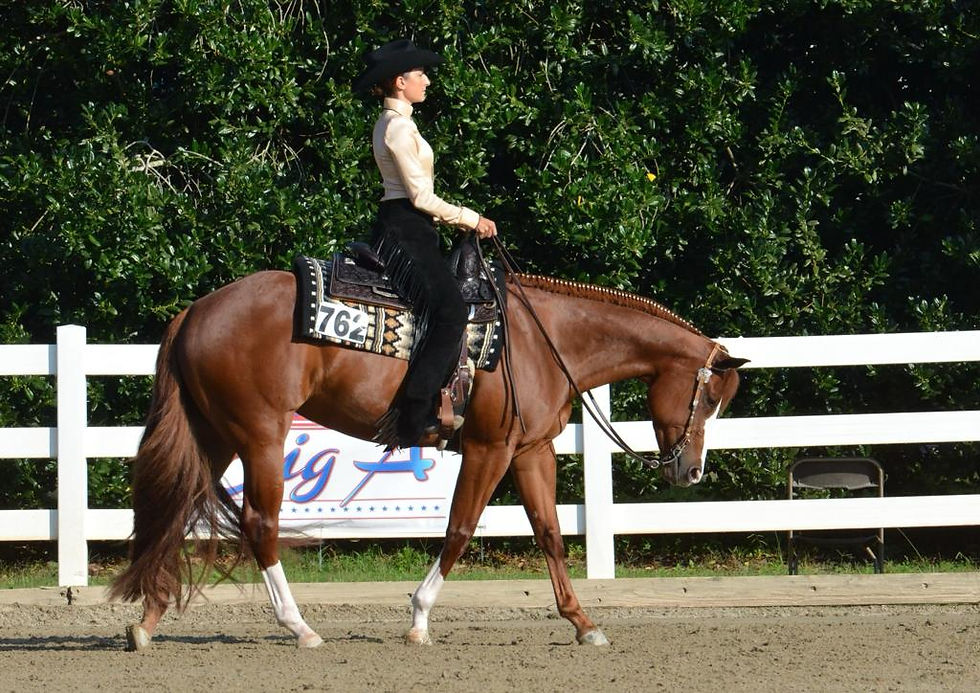"Think like a horse"
- Gilead (Gil) Friedman
- Dec 11, 2023
- 3 min read
Updated: Oct 6, 2024
Horsemanship means to listen – to your horse and to yourself
The ability to think like a horse is both a skill and a mindset that equestrians can develop. Why, you ask? It's because there isn't a one-size-fits-all approach to riding horses; each individual, whether human or horse, is unique. While we can learn the fundamentals of riding, it's the execution of our riding skills that truly matters. Horsemanship isn't just about instructing the horse; it's also about learning from the horse while communicating with it during the ride.
"To learn" means to listen – to your horse and to yourself. When we train horses, both on the ground and while riding, we may seem to "force" them to pay attention to our commands and behaviors through pressure and release. However, it's important to understand that a horse's attention is influenced by its own subjective nature, physical abilities, and talents, which in turn define the quality of the learning process. We cannot control the timeline of this process unless we resort to aggressive methods and violence. Thus, the quality of the horse's learning experience depends on the clarity of our communication.
If we wish to develop our learning skills, we need to "think like a horse." This entails being aware of our inner state at every stage of the process, whether we're on the ground or in the saddle. Learning, at its core, involves expanding our knowledge by making room in our inner state for new information to enter. To achieve this, we must cleanse our inner state – our soul – of goals, dreams, fears, and prejudices.
Here are a few ways to accomplish this:
Eliminate the Time Factor:

Horses live in the present moment and don't concern themselves with tomorrow. If we can remove the concept of time from our minds, we create mental space for learning about our horse's current state and its ongoing learning process.
Your Sensations Matter:
Every moment of our communication with the horse involves our sensations. What we feel is the truth of what's happening – both how we project information to the horse and how the horse communicates with us. Paying attention to these physical experiences enables a dynamic and accurate flow of information between rider and horse.
Acceptance:
The training journey has its ups and downs, both for the rider personally and in the horse's communication. Maintaining a neutral stance, free of emotions, is crucial because it's about learning, not just achieving. We're not being tested in the show pen; we should accept the current ride as it is, appreciating the process and our good fortune to be riding. Acceptance means there's no "good or bad," only a part of our ongoing journey with our horse.
Recommended exercises:
Journaling:
Document your progress, thoughts, experiences, and ideas. This process helps you reflect on your journey with your horse, tracking its progress and your own.
Picking Up Your Eyes – Going out of Your Comfort Zone: Riding while raising your gaze takes you out of your comfort zone, encouraging you to feel the horse rather than just seeing it. It also enhances your sensory perception, allowing you to sense the finer details of the connection between you and your horse.
Find a Coach:
Even coaches need guidance. Seek a trusted individual who can help you improve, listen to your thoughts, and provide constructive feedback. A coach can observe your riding and offer insights to help you stay present and continue learning.

To sum it up, the ability to think like a horse is a skill that transcends mere riding techniques – it's about the connection with these unique beings. Understanding that there is no one-size-fits-all approach to horsemanship allows us to embrace the individuality of both the rider and the horse. To excel in this art, we must truly learn to listen, not only to our horses but also to our own inner states.
Keep in mind that riding isn't just about reaching a destination; it's about the journey itself, one ride at a time, embracing the challenges and triumphs, and continuously expanding our knowledge and connection with our horses.


Comments